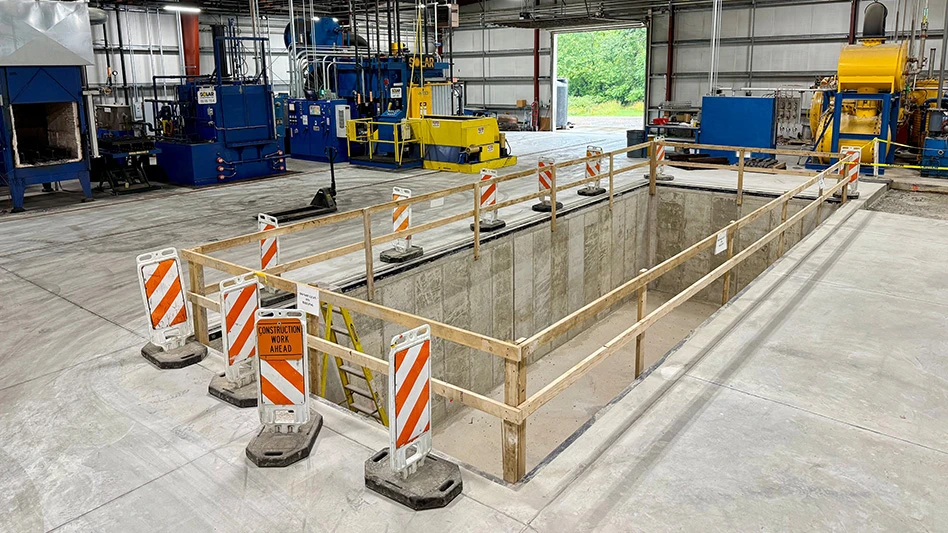
The significance of change is nothing new. For centuries, artists, philosophers and scientists have pondered on and spoken to the inevitability of change and the effects it has upon us.
While we all accept the concept's role in most aspects of our daily lives, a fundamental shift has occurred and the acceleration of technological progress has made change a constant rather than an event.
Because of this, companies in the manufacturing industry must evolve the very nature of their operations. More than ever before, partnerships hold the key to achieving success.
Traditionally, the relationship between cutting tool manufacturers and machine tool builders has resembled a high-tech game of leap frog.
A new machine technology would be unveiled, but no available cutting tools would be able to take full advantage of its benefits. Or, conversely, a breakthrough would occur in tool design, but no existing machine tools would be capable of pushing it to its limits. In both scenarios, the lack of communication and coordination would result in a technology being temporarily crippled by the lack of an adequate complement.
Recently, great strides have been made in cooperation between machine tool builders and cutting tool manufacturers.
By working together and sharing information, the parties are developing complementary technologies in tandem.
As a result, the window of lost potential has been greatly reduced or even eliminated outright.
For example, a major machine tool builder recently developed an advanced machine for aerospace engine manufacturing.
This new concept machine was designed to combine the versatility of a 5-axis machining center with a vertical turning lathe, making it ideal for engine casing production.
At that time, though, no tooling existed with the ability to take advantage of this leap in technology. By working together with the machine tool builder, Sandvik Coromant developed tooling to create advanced solutions for machining engine casings.
In addition to partnerships between providers of interrelated metal cutting products, the relationships between these companies and the end users have become vitally important.
The most obvious example of this occurs during the acquisition of a new machine. With such a broad variety of machine and tool technologies available, selecting the best solution for a particular application is an extremely daunting task.
To guarantee an optimum system, a shop must consult with both machine tool builders and cutting tool providers.
By bringing together the varied expertise of all three parties, the best package for the application can be determined.
Typically, and on many customer projects to date, cost reductions of more than 30% have been achieved when this partnership is formed at the beginning of a new process. This is especially important in aerospace manufacturing, where long process times make it costly to tinker with a production system already in place. To deliver solutions, we must develop process knowledge, right from the start.
Manufacturers benefit most when suppliers act as partners and all parties exchange as much information as possible.
This concept is really starting to gain traction and resonate throughout American industry.
As a testament to this fact, we have seen participation in our OTS (Original Tooling Services) program increase substantially on an annual basis. OTS applies a structured approach to the concept of partnership, benefiting the end user by applying the expertise of a cutting tool supplier and machine tool builder to every step of the purchasing decision.
Despite the current recession, the fundamentals of the aerospace industry remain strong, and while demand is temporarily down, there is still work available.
The companies that will be most successful during these troubled times are those that maximize productivity by harnessing technological advances and pursuing initiatives like green light production.
With the constant rate of change and innovation now found within the industry, staying on top of the latest trends is too big of a job for a company to tackle alone.
The manufacturers who embrace partnerships to maximize the amount of expertise behind their processes will succeed in spite of our current economy and emerge stronger on the other side.

Encouraging Partnerships for the Good of the Industry
In the fall of 2008, Sandvik Coromant opened a new Productivity Center in Schaumburg, IL. Designed to provide training, application analysis and process improvement, the facility is equipped with machining centers from six major machine tool builders. Top executives from Mazak, Mori Seiki, Okuma and GF AgieCharmilles were on hand for the grand opening, demonstrating the high level of partnerships that have formed within the industry. The facility offers customers, machine tool builders and distributors a location to learn about new technologies and ways to apply them for maximum benefit. Through a balance of theory-based training courses, technical seminars and hands-on machine demonstrations, Sandvik Coromant Productivity Centers educate customers in methods for improving efficiency and productivity in metalcutting. Each facility also provides the support necessary to achieve maximum performance from all Sandvik Coromant products. In an effort to keep each customer's success in focus, Sandvik Coromant equipped the Schaumburg facility with standard, Capto-integrated, multi-tasking, high-speed and light- and heavy-duty machines.
The wide variety of machines will enable customers to receive insight and instruction on operations that specifically apply to their own fields of manufacturing.
Sandvik Coromant
Fair Lawn, NJ
coromant.sandvik.com/us
Get curated news on YOUR industry.
Enter your email to receive our newsletters.
Explore the March 2009 Issue
Check out more from this issue and find your next story to read.
Latest from Aerospace Manufacturing and Design
- Close out July with our Lunch + Learn on medical machining solutions
- Build your Controlled Unclassified Information (CUI) toolkit
- Michigan Advanced Air Mobility (AAM) Initiative established
- Threaded adjustable grippers
- GKN Aerospace accelerates additive fabrication for fan case mount ring
- Expanded offering of internal coolant live tools
- #47 Lunch + Learn Podcast with INSACO
- Doncasters’ Groton expansion reaches major milestone








